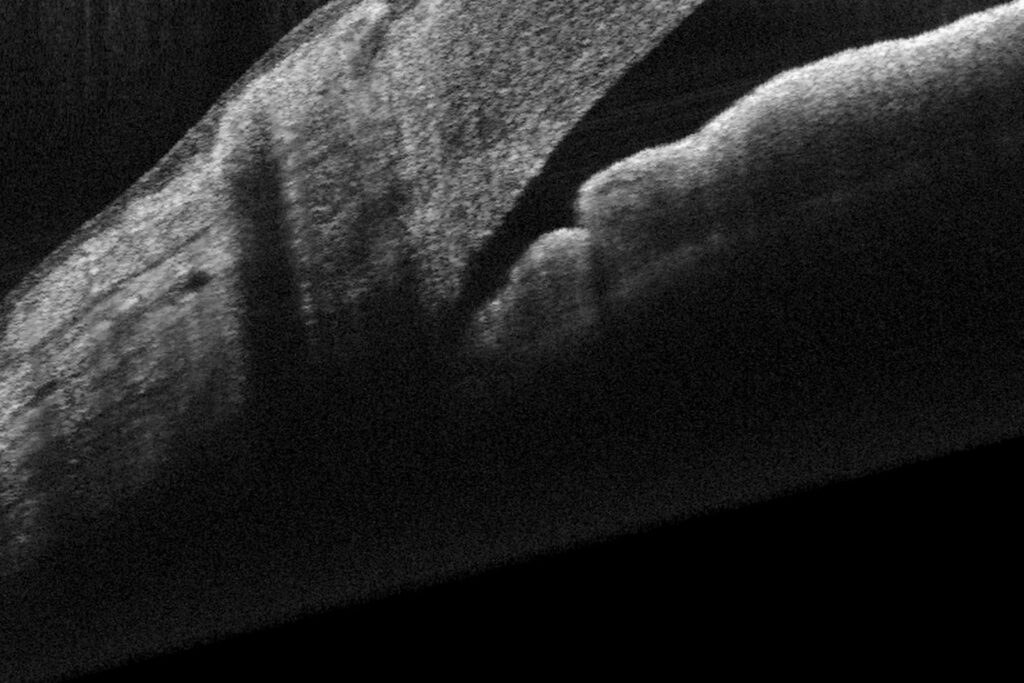The moment I decided to become an eye surgeon is etched in my memory. I was a medical student at the Princess Alexandra Hospital in Brisbane, watching Professor Lawrie Hirst perform a laser peripheral iridotomy (LPI). The beauty of the eye, the overwhelming importance of preserving vision, and the elegance of the procedure all coalesced in my mind in an instant. I was hooked, and I’ve been hooked ever since. That patient had suffered an attack of primary angle closure glaucoma (PACG), and her second eye was being treated to prevent a similar attack from occurring.
PACG is not as common as open angle glaucoma, but remains a major cause of irreversible blindness affecting around 20 million people around the world. It occurs in people with “anatomically narrow angles” (ANA), meaning that the front chamber of the eye is shallow enough that in these people the internal flow of fluid becomes obstructed and the pressure inside the eye (the intra-ocular pressure, or IOP) rises catastrophically. PACG can occur at any time, but most commonly occurs at night when the pupil naturally dilates, so treatment is often delayed and results can be compromised. LPI is an essential part of the treatment for patients with PACG, but deciding whether or not to use LPI for prevention in patients with ANA, but without signs of PACG, has been difficult, with unclear evidence to guide decision making. A major randomised controlled trial performed in China, the ZAP (or Zhongshan Angle Closure Prevention) Trial sought to answer the question of whether or not to treat people with ANA, and the 14 year follow-up data have just been published. Also just published this year was a large American study looking at the risk of patients with ANA developing PACG.
The ZAP Trial showed that although LPI more or less halved the risk of PACG, that risk was fairly low to begin with, and the study authors didn’t recommend using LPI for prevention. It’s very important to note, however, that patients whose IOP rose after they had pupil-dilating drops instilled were treated with LPI and not counted in the study. Many ophthalmologists (me included) would consider that a “provocative test”, designed to find patients at highest risk. Excluding them from the analysis of results could give a false impression that the risk of PACG is lower than the “real-world” risk. A recent article reviewing the findings of the ZAP Trial (Filippopoulos et al, 2023) suggests that ophthalmologists should still consider LPI for patients with risk factors for PACG (eg hypermetropia, need for frequent dilated retinal exams), or with poor access to medical care. In the real world, I find LPI an important tool to have available.
A recent case-control study (Yoo et al, 2023) of almost 4000 patients identified through health claims data in the USA reported a rate of conversion from ANA to PACG of around 4% per year. Older age was a risk factor, and for the first time race or ethnicity was not found to be a risk for PACG (although it is probably a risk for ANA with a higher prevalence in Asians). Estimates of rates of risk are hampered by loss to follow-up, and differences in criteria that doctors use to diagnose ANA, but the study is important for showing that cataract surgery is strongly protective against PACG, and the authors recommend considering cataract surgery earlier in patients with ANA and visual symptoms due to cataract.
References:
Yoo K, Apolo G, Zhou S, Burkemper B, Lung K, Song B, Wong B, Toy B, Camp A, Xu B. Rates and Patterns of Diagnostic Conversion from Anatomical Narrow Angle to Primary Angle-Closure Glaucoma in the United States. Ophthalmol Glaucoma. 2023 Mar-Apr;6(2):169-176. doi: 10.1016/j.ogla.2022.08.016. Epub 2022 Sep 2. PMID: 36058536; PMCID: PMC9978040.
Filippopoulos T, Danias J, Karmiris E, Mégevand GS, Rhee DJ, Gazzard G, Topouzis F, Xu B. Rethinking Prophylactic Laser Peripheral Iridotomy in Primary Angle-Closure Suspects: A Review. Ophthalmol Glaucoma. 2023 Jun 13:S2589-4196(23)00106-0. doi: 10.1016/j.ogla.2023.06.004. Epub ahead of print. PMID: 37321374.
Yuan Y, Wang W, Xiong R, Zhang J, Li C, Yang S, Friedman DS, Foster PJ, He M. Fourteen-Year Outcome of Angle-Closure Prevention with Laser Iridotomy in the Zhongshan Angle-Closure Prevention Study: Extended Follow-up of a Randomized Controlled Trial. Ophthalmology. 2023 Aug;130(8):786-794. doi: 10.1016/j.ophtha.2023.03.024. Epub 2023 Apr 6. PMID: 37030454.


